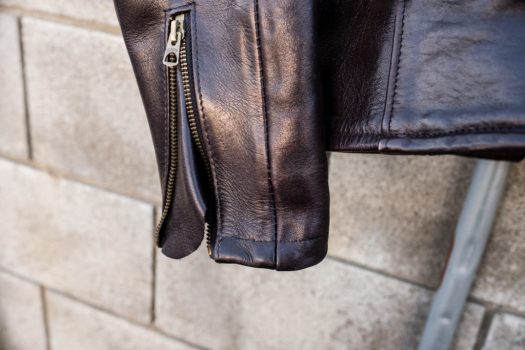
Introduction
In the past few years, Filson has expanded their use of their more than 100-year-old “Tin Cloth” to their bags (which originally used rugged twill). Tin cloth is a waxed canvas nicknamed “tin” by the forest workers. They they felt the garments were like armor protecting them from the harsh rain, wind, and brushes during the Klondike Gold Rush.

Filson’s original line of luggage used 22oz rugged twill as the primary exterior material. And while many bags from that line still utilize the twill, Filson has released newly designed bags that have integrated their renowned Tin Cloth into their construction. Some bags use a combination of both materials such as my Photographer’s Backpack, while other bags use solely Tin Cloth.

I really like the designs of the newer bags such as the 24 hour briefcase and the 48 hour duffle bag. Another change I’ve noticed with these bags is that they use a Nylon Webbed Shoulder Strap instead of the Bridle Leather Shoulder Strap. The nylon strap seems lighter in weight and appears to distribute the weight over a larger area. I haven’t tried out the nylon strap, but I prefer the look of the bridle leather strap!
If you are in the market for one of Filsons Tin Cloth bags, it would be beneficial for you to know some of the key differences between the Tin Cloth and Rugged Twill.
If you already have one of Filson’s rugged twill bags, the interior seams should be bound with Tin Cloth for durability. You will likely see that the tin cloth seams have darkened/patina faster than the twill around it.

Rugged Twill
- Comes with a water repellant finish that will wear off over time
- Material is quite stiff and takes a long time to soften up
- The first areas to fray are typically the edges of bags where they receive the most rubbing
- Twill’s diagonal weave (the weave used on denim) makes it more resilient than canvas to clean tears
Tin Cloth
- Lighter in weight (Filson typically uses about 15oz) than the rugged twill
- Requires periodic rewaxing (Filson Original Oil Finish Wax recommended)
- Provides less structure when the bag is empty
- Repels water better than the rugged twill because of the coating and tightness of the weave
- Consequently, this tight weave and wax makes the material not very breathable
- Attracts dirt/debris more quickly than the twill
- Has a cold, clammy feel especially when newly rewaxed
- Seems prone to “tearing” especially at areas that are creased
- Shrinks a bit more than the twill especially on outerwear that is repeatedly wet and then dry
Thoughts
Tin cloth seems to darken (or patina) easily. I speculate that the waxed finish helps attract dirt to its surface. The change in color on Tan tin cloth is more distinct than on the Otter Green tin cloth. In addition, rewaxing tin cloth with Filson’s Original’s Wax Finish darkens the material even more. The color will lighten up slightly again when the wax wears off. Tin Cloth is most well-known in the Filsons’s Tan color, while Otter Green comes as a second. Occasionally, black or navy tin cloth is used on bags/outerwear, and I suspect these colors won’t show dirt as easily.
Here’s are some older pics of my Levi’s x Filson Oil Finish Tin Cloth Trucker that was a limited release in 2011/2012.

Filson recommends a stiff bristled brush to clean the material and spot cleaning. Tin Cloth should not be put in the washer. Personally, I take a damp rag and wipe the areas down.
The Tin Cloth that Filson uses is 15oz compared to Barbour’s waxed cotton jackets which is 6oz or less. Between the two, Barbour’s jackets are soft, while Filson’s Tin Cloth jackets remain quite stiff throughout its lifetime.
While Tin Cloth repels water better than the rugged twill, the fabric is very unbreathable because it is tightly woven. If you’re wearing an unlined jacket with this material, expect to be soaked with your own sweat! Barbour’s outerwear typically comes with a cotton lining to help with this.

Conclusion
Tin cloth is an older formula than Filson’s rugged twill because it was used on their garments first. The extra water resilience that the fabric has requires periodic rewaxing to maintain it.
Most of the newer bags that have tin cloth come with a Nylon Webbing Shoulder Strap instead of a Bridle Leather Shoulder Strap (priced at $85 on their website!)
I suppose if you want the best of both worlds, you can take Filson’s Oil Finish Original Wax and apply it on a rugged twill bag. You’ll likely need more than one tin worth to cover the whole bag. In doing so, you get the water repellancy from the original wax and also the thickness of the twill. To prevent fraying or reduce additional fraying on my older Filson twill bags, I have taken a dab of the wax and apply it on the areas that receive the most wear (typically the bottom edges of the bag).









































































































































































































